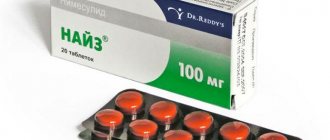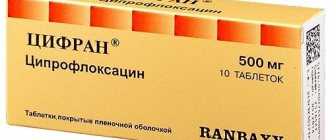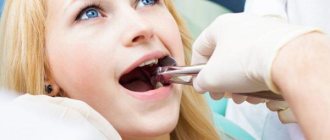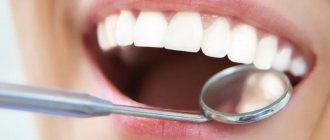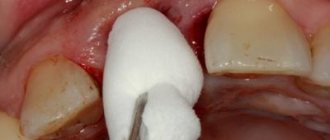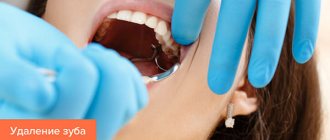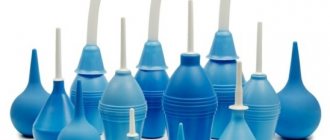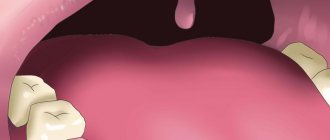Today, treatment of burns is a pressing problem. According to state statistics for 2022, at least 30,000 people suffered thermal or chemical injuries. This is one of the most common household injuries. However, you can often get a burn at work, where safety conditions are not met.
If burns occur, you must be able to provide proper first aid in a timely manner. How quickly you help yourself or the injured person will determine his further condition and the speed of treatment.
The human body is able to regenerate itself and remove minor burns without serious consequences for health. More serious burns require immediate medical attention to prevent complications. Such wounds need to be monitored to prevent infection and regularly treated with anti-inflammatory medications or anti-burn wipes.
If you find yourself close to a burnt person, you really need to know how to treat a burn, otherwise you will do more harm than good with your actions.
Causes of burns
A burn can occur due to exposure to:
- fire;
- hot liquid or steam;
- hot metal, glass or other objects;
- electric current;
- radiation (x-rays or radiation therapy);
- ultraviolet radiation (sun or solarium);
- active chemicals.
It is worth noting that the causes of burns may be different, but all types of such injuries are classified depending on the degree of damage caused and symptoms:
- First degree. This burn affects only the outer layer of the skin. The injury is characterized by redness, swelling and pain. The victim is given first aid and a short course of treatment is prescribed.
- Second degree. This burn leads to damage not only to the epidermis, but also to the underlying layer - the dermis. The lesion is characterized by redness, whitening or mottled skin, pain and swelling. It is possible to develop blisters from burns and severe pain.
- Third degree. With this type of damage, the fat layer under the skin is affected. Burnt areas of the body become charred, blackened or white. Third degree burns often disrupt the functioning of the nervous and respiratory systems.
First steps to neutralize thermal burns
- remove the victim as far as possible from the heat source;
- If clothing or equipment is smoldering, you should get rid of it immediately. If clothing is stuck to the skin, you must carefully cut it off or remove it;
- apply dry ice or use cold water to the damaged area;
- treat damaged areas of the body with burn ointment;
- In case of serious injuries, call an ambulance.
Neutralization of chemical burns
- Rinse the affected area with a strong stream of water. Under no circumstances should you treat a wound with oil.
- If a burn is caused by quicklime or sulfuric acid, it should be
- treat with a dry cloth, the use of water is unacceptable;
- apply a sterile antiseptic bandage.
There are situations when people get severe burns. Treating them outside the hospital requires special knowledge and skills. If a person does not have them, it is better to immediately consult a doctor.
First aid if a child burns his tongue, palate, lips, throat with boiling water or hot tea
Cases of burns of the lips, tongue and palate in children from boiling water, hot liquids or foods most often occur due to the carelessness of adults - they did not notice, did not control. But what happened happened. You will blame yourself and work on your mistakes later. Give your child first aid immediately:
- Be sure to call a doctor. It is difficult to determine the degree of burn yourself; let a specialist do it. For first- and sometimes second-degree burns, the child will not be taken to the hospital, but they will tell him what to do. If the injury is of the third degree of severity, the child needs specialist help, it will be provided in a hospital.
- Before the doctor arrives, try to reduce the pain your child is experiencing. Give him a piece of ice or frozen berry to suck on. If you have ice cream, that will work too.
- If your child knows how to rinse his mouth, let him rinse with water or milk from the refrigerator.
- You can also use honey as a folk pain reliever and anti-inflammatory remedy, but only if the child is over 1 year old and is not allergic.
- At your own discretion, never use anesthetics with a “freezing” effect - lidocaine, novocaine, etc. Firstly, it will be difficult for you to calculate the dose based on the child’s age. Secondly, the child may bite the numb cheeks and tongue. Thirdly, if used incorrectly, the throat and larynx may become numb, and the child will have breathing problems.
Burn of the oral cavity in a child.
IMPORTANT: Chemical burns of the mouth in children are one of the most common injuries. Make sure that vinegar, iodine, bleach and other household chemicals are out of the child’s reach. If trouble happens, don’t rely on chance and call an ambulance immediately.
Keep chemicals out of the reach of children.
Degree of burns
There are three main degrees of burns: first, second and third. The rating of each grade is based on the severity of the skin damage, with grade one being the most minor and grade three being the most severe.
Signs of damage look like this:
- first degree burns: the epidermal layer is damaged, the skin is red, slightly swollen;
- Second degree burns: blisters appear and skin peels off;
- third degree burns: tissue necrosis is observed, the skin becomes white, a crust forms;
There are also fourth degree burns. This degree includes all the symptoms of a third degree burn. The damage penetrates beyond the skin and spreads to the tendons and bones. It is in this case that scars remain after a burn.
Chemical and electrical burns require immediate medical attention because they can affect internal organs, even if external damage is barely visible.
The type of burn does not depend on the cause of its occurrence. A scald, for example, can cause all three types of burns—thermal, chemical, and physical—depending on how hot the liquid is and how long it remains in contact with the skin.
Symptoms of a tongue burn
Symptoms depend on the extent of soft tissue damage:
First degree - a burn occurs due to short-term exposure to high temperature tissue. The patient experiences slight redness and swelling of the mucous membrane. Often, a burn condition is provoked by consuming too hot food or liquid.
Second degree – swelling of the mucous membrane, redness, and multiple blisters on the surface are observed.
Third degree - accompanied by tissue death, large blisters, redness of the surface, the organ itself seems to “change its consistency.” As a rule, it occurs due to exposure to gases, liquids at elevated temperatures, or chemical compounds.
The fourth degree is a severe lesion when the tissues are charred. This burn condition is rarely compatible with life.
Treatment after burns
If you receive minor injuries, you can try to neutralize them on your own. If you have knowledge of how to treat superficial wounds, you can handle this yourself.
Ointment or gel for burns from boiling water helps well with kitchen problems. If second or third degree burns have been sustained, hospital treatment is required. It should be done in a clinic under the supervision of doctors. The therapist will recommend how to treat the burn or how to treat a burn with blisters.
Skin restoration after a burn
What helps with burns is careful hygiene and regular wound care.
After injury, a blister immediately forms on the skin, filled with clear plasma, which can seep through the burned tissue. With proper treatment, inflammation and suppuration can be avoided, and regeneration will occur faster.
Within a few days, the blisters from the burns will begin to subside and peel off, and new skin will begin to form under the blister. At this time, the wounds may itch, but you should not touch the affected area - by the end of the first week the itching will go away on its own.
If the wound is neglected, a process of suppuration may develop. It may be accompanied by fever, sudden weakness and chills. With such a history, regeneration of the skin may take weeks. In this case, compacted growths and ridges are likely to appear.
Treatment of scars after burns
If you are interested in how to get rid of the external consequences of a burn, you need to know that in case of serious damage to the skin, the scar will remain in any case. Here you will need the help of a cosmetologist who will help restore the normal appearance of the skin.
Typically, for such an operation, a scar excision technique is used, after which several cosmetic sutures are applied to the tissue. When the sutures are removed, the damaged area is treated with ointments that prevent the formation of new scars on the skin.
For particularly difficult cases, for example, burns from boiling water, the laser resurfacing technique is used. Modern equipment allows you to completely remove scars and achieve perfect skin. If the severity of the burn is insignificant, chemical peeling with fruit acids is recommended.
How to relieve pain from a burn: tips and folk recipes
To relieve pain from a mouth burn:
- breathe through your mouth, the cold air will act as a distraction
- rinse your mouth with cold water
- eat ice cream or yogurt from the refrigerator
- If your tongue or lip is burned, sprinkle the damaged area with sugar and wait until it dissolves.
- suck a spoonful of honey in your mouth
- dissolve 5 drops of aloe juice in 0.5 teaspoon of water, dip a sterile bandage in the solution, apply a compress to the burned area
Ice cream can be used as a pain reliever for mouth burns.
Pharmacy medications help:
- Vitamin E capsules. Open the capsule and pour its contents onto the burn.
- Lidocaine 5%. Soak a sterile cotton swab in lidocaine ointment and treat the burns with the swab.
- Anestezin 5%. Dissolve it in a small amount of sea buckthorn oil.
- Novocaine 2% in ampoules. Use it in the same system as lidocaine.
Lidocaine ointment is used to relieve pain in mouth burns.
Remedies for burns
How to treat a burn, and what kind of surgical assistance can be provided independently in the field or at home?
The use of creams such as Levomikol or Rescuer is guaranteed to help with minor injuries, such as briefly touching a hot pan. Dexpanthenol works very well for first degree burns. If the degree of damage is more serious, creams can only be used as a preventive measure and there is no point in relying on them.
Anti-burn products such as sprays or gels - for example, Burnshield Anti-burn Hydrogel - are more effective because they are dispersed and are better absorbed by the skin. These drugs combine two functions - anti-inflammatory and analgesic.
Buy
Buy
Buy
There is another type of treatment - special anti-burn dressings. They are recommended when the patient needs to be outdoors. Such dressings prevent dirt and dust from entering the wound.
How to treat a burned tongue
The choice of first aid method depends entirely on the type and extent of the injury. For the most common mild thermal burns, the following actions are possible:
- Dissolving ice cubes previously soaked in water helps relieve pain and burning. You can use pure frozen water or popsicles, or simply rinse your mouth with cold water. If there is no water, you can cool the burned taste organ by breathing through the mouth.
- For those who have burned their tongue with hot tea, you can make lotions from dairy products: take cold milk or yogurt and hold it in your mouth.
- Sugar will help relieve pain from minor injuries. You need to place it on the burned area and hold it for a minute. You can use honey instead of sugar, but only if you are not allergic.
- Lightly salted water can not only reduce pain, but also disinfect the wound to prevent complications.
To quickly heal a burned tongue, you can use cough drops with menthol.
To prevent infection of the lesion with bacteria, you can rinse your mouth with a furatsilin solution or potassium permanganate. Until the discomfort is eliminated, you should not eat hot, spicy, salty or sour foods.
If blisters or necrotic ulcers appear on your tongue, you should definitely contact a doctor. Deep thermal, chemical and radiation damage to tissues often leads to infection and painful shock.
For second, third and fourth degree burns, doctors prescribe painkillers, vitamins and, if necessary, perform surgical treatment.
How not to treat burns on the tongue
Those who have burned their tongue with boiling water should not do the following:
- Treat your tongue with products designed to treat skin burns. If they enter the oral cavity, drugs for external use penetrate the digestive tract and can cause poisoning.
- Remove dead tissue from the tongue with sharp improvised objects. Touch blisters and ulcers with your hands. Such actions can lead to wound infection and the development of violent inflammation.
- Select your own medications to relieve pain and inflammation. Self-medication is especially dangerous for children, pregnant women, and people with chronic diseases. With a first-degree burn, the pain is not too intense, and you can get rid of it with folk remedies. For the second, third and fourth degrees of damage, treatment is always prescribed by a doctor.
Chemical, electrical and radiation burns of the tongue
If you have a tongue burn caused by spicy food, you can eliminate the discomfort on your own. Often such consequences occur after eating dishes with pepper. Its aggressive component, capsaicin, severely irritates not only the oral mucosa, but also the skin. You can get rid of it by drinking a glass of milk or fermented milk drink, or eating a piece of milk chocolate or bread.
In case of a chemical burn to the tongue, you must call an ambulance.
To make it easier for the doctor to cure the victim, you need to try to determine the substance that caused the burn. Before the ambulance arrives, you can neutralize the effect of the substance and remove its remains from the oral cavity yourself:
- If acid gets in, the victim’s mouth is rinsed with soda solution.
- If you are burned with alkali, you need to make a weak solution of vinegar or citric acid and rinse the victim’s mouth with it.
Burns caused by radioactive substances and electricity cannot be treated at home. Both radiation and current can cause irreparable damage to vital organs, so such incidents require urgent complex therapy.
To reduce the risk of general burns
At home, you can quite simply reduce the risk of burns; you just need to follow a few recommendations:
- Do not leave cooking or already cooked food on the stove unattended;
- frying pans are placed on the stove with handles towards its back;
- any hot liquid must be placed out of the reach of children and animals - boiling water is a common cause of thermal burns;
- Do not store electrical appliances near water;
- Do not cook in flammable clothing;
- You should block your child’s access to electrical and gas appliances;
- Protective caps must be put on sockets that are not in use;
- you should not smoke at home;
- smoke detectors require regular maintenance and battery replacement;
- the house or apartment must be equipped with a fire extinguisher;
- Chemical burns are caused by chemicals - they must be stored in a place inaccessible to children and animals.
Treatment of a burn to the oral cavity in a child
According to statistics, a large percentage of patients who turn to a doctor for help as a result of a burn to the mouth or tongue are children. Young patients up to a year and older can unknowingly “taste” household chemicals or alcoholic drinks accidentally left on the table by their parents. Also common causes of burns are eating too hot food.
The mucous membrane of a child’s tongue is more delicate and thin, and therefore requires more delicate handling in case of a burn. For treatment, you must urgently contact a pediatric dentist.
